
The expert looking at how air moves around buildings
When Professor Catherine Noakes OBE FREng was younger, engineering seemed liked an almost unavoidable career path. Her father was an aeronautical engineer, her mother worked on computers at the University of Manchester where she was involved in the early days of electronic publishing. “I guess STEM was always part of growing up,” says Noakes. At school her favourite subjects were science, maths and technical drawing. “We did graphic design. I really enjoyed that.” Problem-solving was also something she took to as far back as primary school.
When it came to finding a degree course, Noakes opted to study mechanical engineering at the University of Leeds. Her course, in mathematical engineering, was “basically mechanical engineering with extra maths. I really enjoyed it because I could do more maths. I have probably forgotten most of it now,” she laughs. But that seems unlikely. She latched on to fluid dynamics as an undergraduate, a topic that involves both engineering and maths. Fluid dynamics, and its application to different challenges, has been a constant in her career. It remains so in her work on how diseases spread in buildings.
Applying fluid dynamics in practice
The appeal of fluid dynamics was in its use of “really complicated equations, but they then describe the things you see. It’s physics, isn’t it? I just found it fascinating.” As an undergraduate she did modules on compressible flow for aerodynamics and non-Newtonian fluid dynamics. Noakes liked that the same equations can apply to the weather and its flow around the Earth and to micron-scale coatings on film.
Fluid dynamics took her into a PhD on thin-film coatings. That PhD, also at Leeds, added a new dimension to Noakes’s experience: the use of computer power to tame those equations. “I learned about coding; I learnt computational fluid dynamics.” After her PhD, she spent time working as a knowledge transfer associate, in Delpro Ltd, a company that made machines to coat paper. Among other things, Delpro developed equipment to produce sticky labels and make bank notes.
“I came into that because I’d got the PhD around thin film coating, but I then worked on drying because you dry it to coat,” she says. “I quite enjoyed going to some of the sites where they’d installed machines. These things are huge. Metres and metres long, and they run at speeds of several 100 metres a minute. There’s something about being involved with designing and developing machines like that. It was quite a challenging role.”
The appeal of fluid dynamics was in its use of “really complicated equations, but they then describe the things you see. It’s physics, isn’t it? I just found it fascinating.”
Quick Q&A
Taking David Bowie to a desert island
Who influenced your engineering career?
A big thanks to Professor Clive Beggs who first got me into infection control engineering.
What’s your advice to budding engineers?
Follow the things you are passionate about.
Best bit of the job now?
I love seeing students develop and becoming experts in their own right.
Which record/book would you take to a desert island?
Any of David Bowie’s music.
Most admired historical bit of engineering/engineer?
Fountains Abbey in North Yorkshire – even the monks understood ventilation and sanitation.
Overlooked engineering successes?
All the bits that make buildings work – we rarely see the heating/ventilation plant, but it is crucial to our everyday lives.
Hoping to work in industry, Noakes applied for a few jobs until a civil engineer in the university asked her if she would be interested in a postdoctoral position at Leeds. “I almost said, ‘No, not really, I want to do something different’.’” Not taking no for an answer, they invited her to drop by for a chat. The post turned out to be about controlling tuberculosis transmission.
A group of civil engineers at Leeds wanted to investigate using ultraviolet (UV) light in a room to inactivate bacteria. Noakes’s immediate response was “I don’t do biology”; but on reflection, she could see a fluid-dynamics problem, about air flow interacting with UV light in a room – a physics problem with a biological aspect. Somebody breathes out bacteria and where do they go in the room?
Noakes says: “I toyed with a couple of job offers and decided to go with that one. I’ve not looked back since then.” Two decades later, that decision put her on the frontline of one of the biggest challenges that has faced society in decades: how to handle the outbreak of COVID-19, a clear case of engineering meets medical science and people. It took time to reach that stage, starting with her PhD. “I rapidly learned about building ventilation, the engineering side of that, but also the wider picture. I really enjoyed using the skills that I had built up around fluid dynamics to tackle something that had a societal impact.” She started working with clinicians and microbiologists and, as her career developed, architects and social scientists. It turned out to be complex territory. “We can describe ventilation in a building as physics ... but it’s very complicated physics that is influenced significantly by the people in the space. Capturing that human impact is incredibly challenging. Anybody who works in the field has to think through the complexities and limitations of what they do. It’s too easy to just say, ‘Hey, I’ve done a physics model’. But that physics won’t be right. It’s knowing how incorrect it is, how much you can draw from it, and how much you can’t. That’s where it becomes important.”
Responding to COVID-19
Until recently, research on health and indoor air was down to a relatively small community, with focus on studying air quality and topics like climate change, energy in buildings and sustainability. “I was one of a very small number of people worldwide who worked on things around infection transmission in buildings,” says Noakes. “I would turn up at conferences and everybody else was talking about particles or gases in the air or temperature or humidity. And I’m the one who goes ‘By the way people breathe out microbes that cause disease’.”
This community focus began to change in the early 2000s, with SARS in 2003 and swine flu in 2009. “The number of people working in this area now has grown massively, but I could probably name 30 people worldwide who worked on it as their main topic prior to COVID-19.” These people were, she adds, a mixture of engineers – civil, environmental and mechanical – with others from backgrounds in public health or infectious diseases. “Where it gets really interesting is where those intersect.”
This small community was suddenly in great demand when COVID-19 wafted in. Noakes had just stepped down as director of research in the School of Civil Engineering at Leeds. “I was thinking ‘great, after six years in this role, I’ve got time to focus on my research again’.” No chance, in March 2020 colleagues in the NHS got in touch. Scotland was quick off the mark. “They were trying to work out how to repurpose parts of the hospital estate and to create new isolation facilities, COVID-19 wards.”
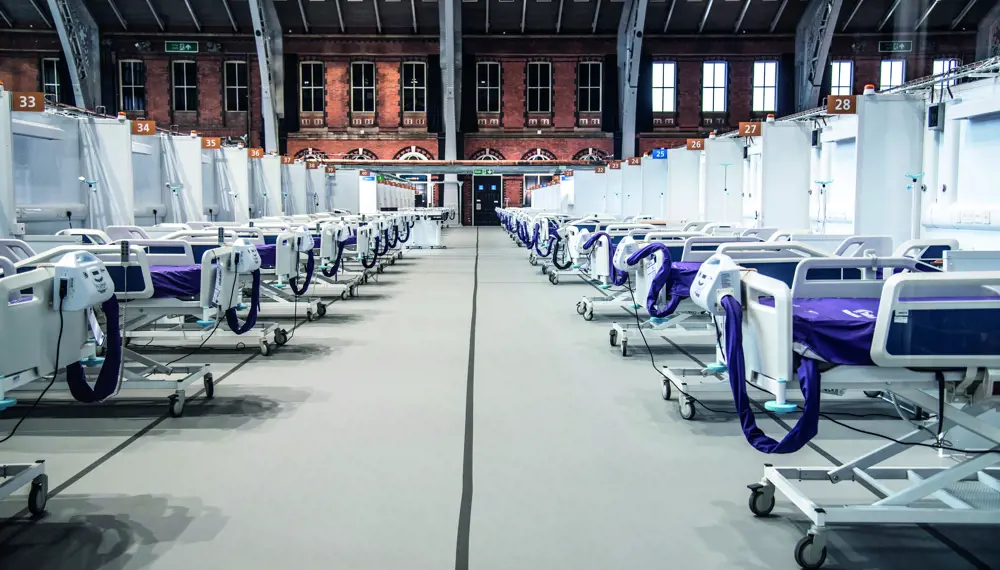
As COVID-19 took hold, creating a need for more hospital beds and Nightingale Wards, the NHS sought advice from Professor Catherine Noakes on how viruses spread © thisisjude.uk
That was just the beginning. The Royal Academy of Engineering called early in April: the Academy and its partners in the National Engineering Policy Centre had been commissioned by the Chief Scientific Adviser Sir Patrick Vallance HonFREng FRS FMedSci to identify the interventions needed in the UK’s built environment and transport systems to reduce infection transmission, including the Nightingale hospitals. Then, on 7 April there was a call from SAGE, the government’s Scientific Advisory Group for Emergencies. “These dates are embedded in my head. They wanted a paper on the 14th.” There wasn’t time to assemble a national group in just a week. “I just pulled together a few colleagues and PhD students at Leeds. We put together a massive, very, very rapid literature review as quickly as we could. We put this paper to SAGE on 14 April and Sir Patrick Vallance asked us to set up a subgroup to look at environment and transmission. We convened that group in about a week and had another paper out a week later. The timelines were just ridiculous.”
That group, one of five key subgroups for SAGE, assembled experts in universities and public sector research organisations across the UK, to give advice around environment and transmission. This was an important issue at the time. The country was in lockdown, but that could not last for ever. “A lot of the government chief scientific advisers ended up on our SAGE subgroup because we were doing things that were very practical. We were looking at all the things that they were worrying about.”
Lessons from COVID-19
Schools and their role in the spread of infection are still teaching us long after closed classrooms made headlines during lockdown. “Schools are a great place to start learning about indoor air,” says Noakes. “With a simple monitor you can start to understand how [the school] environment responds to different conditions and the weather.” It is also a good way into education and promoting awareness about how the environment affects people.
Noakes is involved in two projects in schools. She is a member of the steering group for Schools’ Air quality Monitoring for Health and Education (SAMHE). The project is about citizen science and measuring air quality at schools. SAMHE gives teachers real-world experiments for students along with teaching resources that tie in with the school curriculum. Supported by the Department for Education, it can also “help scientists learn how to make schools healthier places”.
Schools in SAMHE get a free air-quality monitor to measure carbon dioxide, volatile organic compounds, particulate matter, temperature, and relative humidity. “If you’ve got an air quality monitor, you can start to do some really interesting explorations yourself,” says Noakes. More than 1,000 air-quality monitors in schools across the UK are collecting data.
Funded by the Engineering and Physical Science Research Council and led by Imperial College London, SAMHE is a collaboration of five universities, including Leeds, and the UK Health Security Agency. “It’s such a lovely project,” says Noakes. “They’ve really thought about how to present data to different age groups and how you engage.”
Noakes is more heavily involved in another schools project, supported by the Department of Health and Social Care. Class-ACT goes beyond monitoring air quality and is testing air-cleaning technologies (ACTs) in classrooms. The project has made high-efficiency particulate air (HEPA) filters available to 30 primary schools and added air quality monitors in 540 classrooms in Bradford. As well as testing filters in schools, Class-ACT is also providing advice to policymakers on classroom ventilation and the practicalities of implementing and using air cleaners.
The project has studied the effectiveness of HEPA filters in reducing primary school absences related to illness. It has also looked into the feasibility of installing ACT in classrooms that had previously relied on opening and closing windows to control the classroom environment.
Class-ACT has yet to publish its final results, so Noakes can’t say too much about the findings of ACT, but is positive about the outcomes. The project has already shown that installing it requires careful consideration, and, while HEPA-ACT may not be a panacea, it is a useful tool that could help schools, and other buildings, become healthier environments.
There were just so many questions about transmission of the virus. “Right at the beginning, we knew very little. Bits of evidence were starting to appear that pointed to ‘super spreaders’, and some of that being airborne. But we couldn’t rule anything out. We didn’t even know if it would survive outdoors. As lab evidence started to come through, it became quite quickly apparent that nearly all of the transmission happened indoors. That enabled us to be able to say, scientifically, we think that outdoors is considerably safer. But it was a real challenge.”
It all came back to the science, and science that was changing, almost by the hour. “Even where you have things like your gut instinct, you can’t use that as evidence to policymakers. You have to base this on some science. And you have to look at what we know from the science, and that changed over time. Communicating how it changed is quite hard. You get one message, and then, if that message changes, you have to try and explain that that message has changed because we’ve understood something new.”
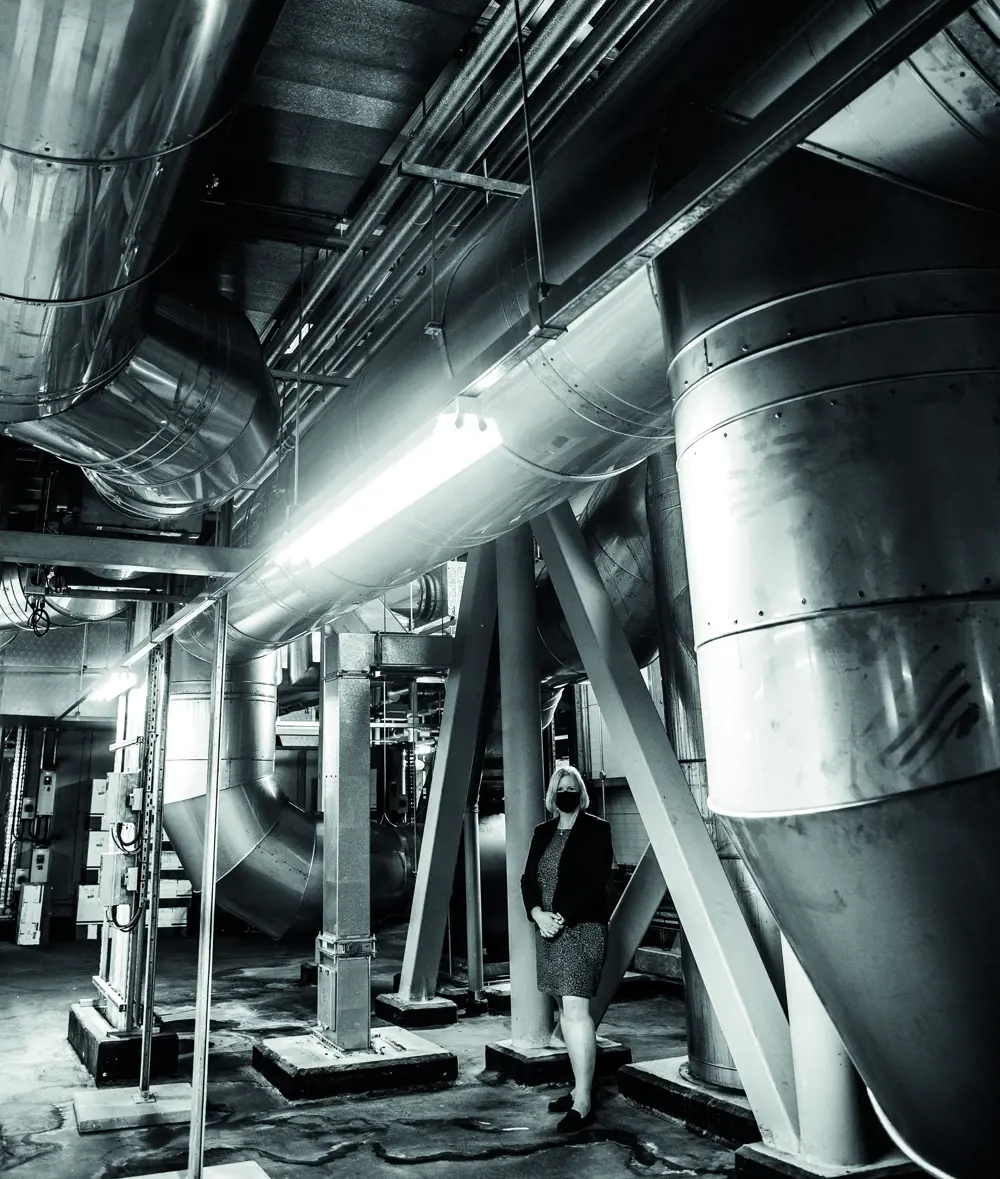
For Professor Catherine Noakes, engineering effective ventilation to create healthy indoor environments means combining physics, biology and human behaviour © thisisjude.uk
Air flow through buildings
COVID-19 threw a light on the wider issue of ventilation and infection. “It has pushed the quality indoor environment, and the impact of environments on health up the agenda,” says Noakes. It led to several research projects, including work on ‘infection resilient environments’ sparked off by a request from Sir Patrick Vallance to the Academy to look at the role that the environment played in the spread of COVID-19. This work included thinking about how you enable environments to be healthy, safe and sustainable.
This thinking involved Noakes in writing major reports on buildings and health. The most recent, Mandating indoor air quality for public buildings, called for wider international use and national legislation on indoor air quality.
COVID-19 didn’t just affect Noakes’s work as an engineer, she became one of the public faces of science. At first SAGE participants were anonymous, when that changed, she became more careful about her own online security and “making sure that where I lived was not identifiable, making sure my son’s school wasn’t identifiable. Initially I didn’t really want to talk to the media,” she adds, “but I realised that there was a gap. And if you’re not careful, other people fill the void. And they don’t necessarily fill the void correctly.” After all, there weren’t many experts around on the science of transmission and the science of why ventilation mattered.
“I had my share of abusive emails and strange emails and things,” she laughs. After she tweeted a cartoon, the Daily Mail dubbed her “the scientist who opposed the twometre rule”. Hardly the worst insult, she admits, but it made her realise that she was being watched. After that she was careful to steer clear of saying anything political on social media.
To make life less depressing, during lockdown Noakes returned to an earlier interest, music. She enjoyed music, playing flute and guitar at school but realised that she was “never going to be good enough to do it properly”. Just before COVID-19 came along she had started to take piano lessons. When the disease hit, she worked out how to continue taking lessons online. “It was great, a really good way of having something else to take my head away. That was one of the things I think that kept me kept me sane.”
Career timeline and distinctions
Studied mathematical engineering, University of Leeds, 1993–1996. PhD in mechanical engineering, University of Leeds, 1996–2000. Postdoctoral researcher, 2002–2006. Lecturer in environmental engineering, 2007–2010. Director, Pathogen Control Engineering Institute, 2010–2014. Director of Research, 2014–2020. Professor of environmental engineering for buildings, 2014–present day. Deputy Director, Leeds Institute for Fluid Dynamics, 2018–2024. Chair, Environment and Modelling Group, UK government Scientific Advisory Group for Emergencies (SAGE), 2020–2022. Appointed Officer of the Order of the British Empire, 2020. Received a President’s Special Award for Pandemic Service from the Royal Academy of Engineering, 2020. Fellow, Royal Academy of Engineering, 2021. Honorary Fellow, Chartered Institution of Building Services Engineers, 2022. Chair, Science Quality Assurance Group, Health and Safety Executive, 2022–present day. Received Gabor Medal from the Royal Society, 2023. Pro-Dean Research and Innovation, Faculty of Engineering and Physical Science, 2024.
For Noakes there are lessons to draw from COVID-19 beyond the obvious technical issues. She has concerns about what the pandemic did for equality, diversity and inclusion and supporting early-career researchers. “It was inevitable that senior scientists got pulled in to advise. We did a lot of work, but we were also pushed across the media. We’ve had to go through an inquiry, for example. There’s an awful lot to take in there. I was quite conscious that the next time this happens, hopefully, I will have retired and somebody else will have to do it. And how do you build up that capacity?”
This is just one of Noakes’s post-COVID-19 concerns. She worries that, as memories fade, “we’re almost in denial about COVID-19. We could have learned an awful lot of lessons and put things in place. Whether it’s building research capacity, whether it’s changing guidance, whether it’s updating our environments to be more resilient. Because there will be another pandemic.” And like most pandemics that sweep the whole world, it will probably be an airborne respiratory disease. “I wish we were more readily thinking about resilience for the future.”
Contributors
Michael Kenward OBE
Author
Keep up-to-date with Ingenia for free
SubscribeRelated content
Civil & structural
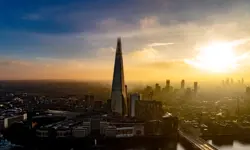
Building the Shard
The Shard is one of London's most iconic buildings. The tallest in Western Europe, it was designed by Italian architect Renzo Piano and dominates the city’s skyline. Ingenia spoke to John Parker, project director for structural engineers WSP, who outlined the engineering decisions made in building the enormous steel and glass structure.
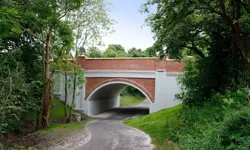
The return of arched bridges
Arch bridges are strong, durable and require little maintenance. However, very few had been built since the early 1900s until the FlexiArch was developed and launched in 2007. Now, there has been a minor renaissance for this ancient form of construction.
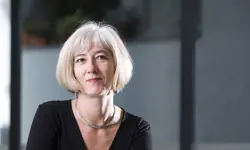
Creating user-friendly buildings
For Michelle McDowell, a former Business Woman of the Year, a passion for joined-up design thinking and building information modelling with a user-friendly approach has enabled her to pioneer revolutionary changes in her field.
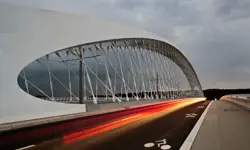
Troja Bridge
In November 2014, one of the world’s largest network arch bridges was officially opened in Prague. The UK may soon have its first network arch bridge if the go-ahead is given for a new rail project in Manchester.
Other content from Ingenia
Quick read

- Environment & sustainability
- Opinion
A young engineer’s perspective on the good, the bad and the ugly of COP27

- Environment & sustainability
- Issue 95
How do we pay for net zero technologies?
Quick read

- Transport
- Mechanical
- How I got here
Electrifying trains and STEMAZING outreach

- Civil & structural
- Environment & sustainability
- Issue 95